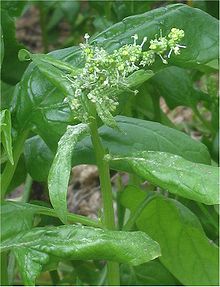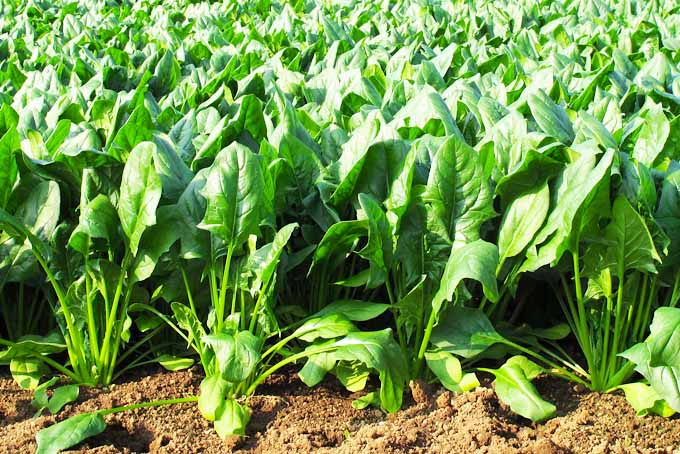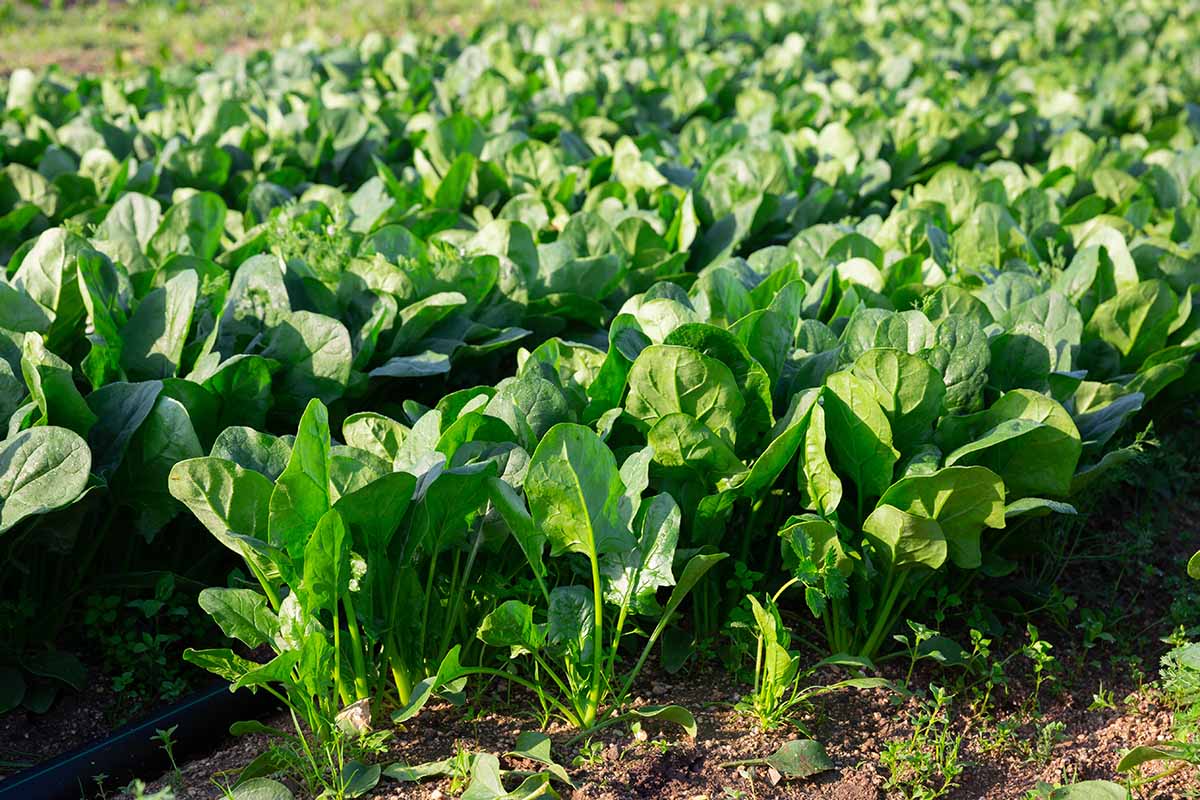Spinach (Spinacia oleracea) is a leafy green flowering plant native to central and western Asia. It is of the order Caryophyllales, family Amaranthaceae, subfamily Chenopodioideae. Its leaves are a common edible vegetable consumed either fresh, or after storage using preservation techniques by canning, freezing, or dehydration. It may be eaten cooked or raw, and the taste differs considerably; the high oxalate content may be reduced by steaming.
It is an annual plant (rarely biennial), growing as tall as 30 cm (1 ft). Spinach may overwinter in temperate regions. The leaves are alternate, simple, ovate to triangular, and very variable in size: 2–30 cm (1–12 in) long and 1–15 cm (0.4–5.9 in) broad, with larger leaves at the base of the plant and small leaves higher on the flowering stem. The flowers are inconspicuous, yellow-green, 3–4 mm (0.1–0.2 in) in diameter, and mature into a small, hard, dry, lumpy fruit cluster 5–10 mm (0.2–0.4 in) across containing several seeds.
In 2018, world production of spinach was 26.3 million tonnes, with China alone accounting for 90% of the total.
Storage
Fresh spinach is sold loose, bunched, or packaged fresh in bags. Fresh spinach loses much of its nutritional value with storage of more than a few days. Fresh spinach is packaged in air, or in nitrogen gas to extend shelf life. While refrigeration slows this effect to about eight days, fresh spinach loses most of its folate and carotenoid content over this period of time. For longer storage, it is canned, or blanched or cooked and frozen. Some packaged spinach is exposed to radiation to kill any harmful bacteria. The Food and Drug Administration approves of irradiation of spinach leaves up to 4.0 kilograys, having no or only a minor effect on nutrient content. Spinach may be high in cadmium contamination depending on the soil and location where the spinach is grown
Nutriens
Raw spinach is 91% water, 4% carbohydrates, 3% protein, and contains negligible fat. In a 100 g (3.5 oz) serving providing only 23 calories, spinach has a high nutritional value, especially when fresh, frozen, steamed, or quickly boiled. It is a rich source (20% or more of the Daily Value, DV) of vitamin A, vitamin C, vitamin K, magnesium, manganese, iron and folate. Spinach is a moderate source (10-19% of DV) of the B vitamins, riboflavin and vitamin B6, vitamin E, calcium, potassium, and dietary fiber (table). Although spinach is touted as being high in iron and calcium content, and is often served and consumed in its raw form, raw spinach contains high levels of oxalates, which block absorption of calcium and iron in the stomach and small intestine. Spinach cooked in several changes of water has much lower levels of oxalates and is better digested and its nutrients absorbed more completely. In addition to preventing absorption and use, high levels of oxalates remove iron from the body.
Pictures
Table
| Spinach | |
|---|---|
 | |
| Spinach plant with flowers | |
| Scientific classification | |
| Kingdom: | Plantae |
| Clade: | Tracheophytes |
| Clade: | Angiosperms |
| Clade: | Eudicots |
| Order: | Caryophyllales |
| Family: | Amaranthaceae |
| Genus: | Spinacia |
| Species: | S. oleracea |
| Binomial name | |
| Spinacia oleracea | |
| Nutritional value per 100 g (3.5 oz) | |
|---|---|
| Energy | 97 kJ (23 kcal) |
3.6 g | |
| Sugars | 0.4 g |
| Dietary fiber | 2.2 g |
0.4 g | |
2.9 g | |
| Vitamins | Quantity %DV† |
| Vitamin A equiv. | 59% 469 μg52% 5626 μg12198 μg |
| Vitamin A | 9377 IU |
| Thiamine (B1) | 7% 0.078 mg |
| Riboflavin (B2) | 16% 0.189 mg |
| Niacin (B3) | 5% 0.724 mg |
| Vitamin B6 | 15% 0.195 mg |
| Folate (B9) | 49% 194 μg |
| Vitamin C | 34% 28 mg |
| Vitamin E | 13% 2 mg |
| Vitamin K | 460% 483 μg |
| Minerals | Quantity %DV† |
| Calcium | 10% 99 mg |
| Iron | 21% 2.71 mg |
| Magnesium | 22% 79 mg |
| Manganese | 43% 0.897 mg |
| Phosphorus | 7% 49 mg |
| Potassium | 12% 558 mg |
| Sodium | 5% 79 mg |
| Zinc | 6% 0.53 mg |
| Other constituents | Quantity |
| Water | 91.4 g |
| |
| †Percentages are roughly approximated using US recommendations for adults. Source: USDA FoodData Central | |


